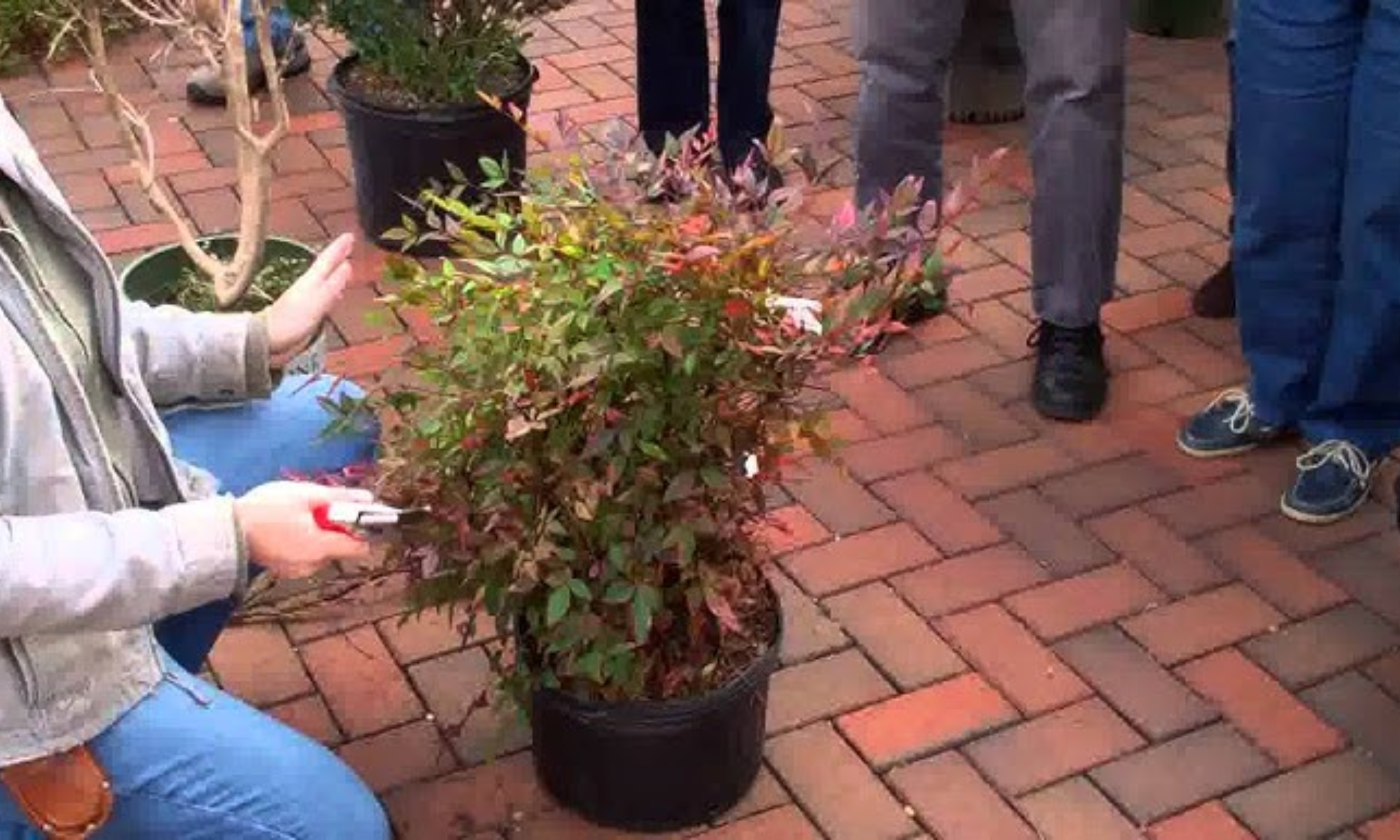When to Prune:
The best time to prune your nandina is during winter when the plant is dormant. Pruning during this time also provides the opportunity to use the cut stems in festive floral arrangements. If winter pruning is not possible, early spring, before the flowers bloom, is another good option. Remember, cutting off the flowers means no red berries in the fall!
Tools You’ll Need:
For thinner shoots (less than ¾ inch or 1.9 cm), use bypass pruning shears. For thicker branches, switch to lopping shears. Keep your tools sharp to minimize plant wounding. You can find these tools at your local hardware or garden supply store.
Safety Tip:
Nandina’s leaves and berries are toxic if ingested, so make sure to keep children and pets away while pruning. If you bring the cuttings indoors for arrangements, ensure they are out of reach.
Pruning Process:
- Start by observing your nandina and visualizing where to cut. A “stair-step” pattern, where outer stems are shorter than the central ones, creates a fuller and more attractive shape.
- Cut the tallest, oldest branches with your shears. Also, remove weak stems near the ground.
- Avoid cutting more than a third of the stalks’ lengths.
- Trim the oldest, longest stems to a third of their original length. Cut the next set of stems down to half their length, and the rest to a quarter. This variation will give the plant a fuller look.
- For older plants, prune one-third of the old growth to encourage new shoots.
Fertilizing After Pruning:
After pruning, fertilize your nandina to provide the nutrients it needs for the upcoming growing season. Trace a 12-inch (30 cm) ring around the plant’s base, keeping the edge 6 inches (15 cm) away from the stem. Apply a 10-30-10 granular fertilizer within this ring, or use a rhododendron or evergreen fertilizer if necessary.
Watering Tips:
Water the plant deeply after fertilizing. The soil should be moist 8 inches (20 cm) down. Adjust watering based on your soil’s dryness to prevent fertilizer damage.
Additional Care:
After pruning, clean your tools with a solution of 1 part bleach and 9 parts water to avoid transferring diseases. Though nandina is generally pest-free, always inspect for pests or diseases and treat them promptly if noticed.
Aesthetic Tip:
Instead of discarding the pruned stems, consider saving some of the more attractive ones with berries for use in a vase arrangement. The bright green leaves and red berries create a beautiful display.
🌱 Happy gardening! 🌱
